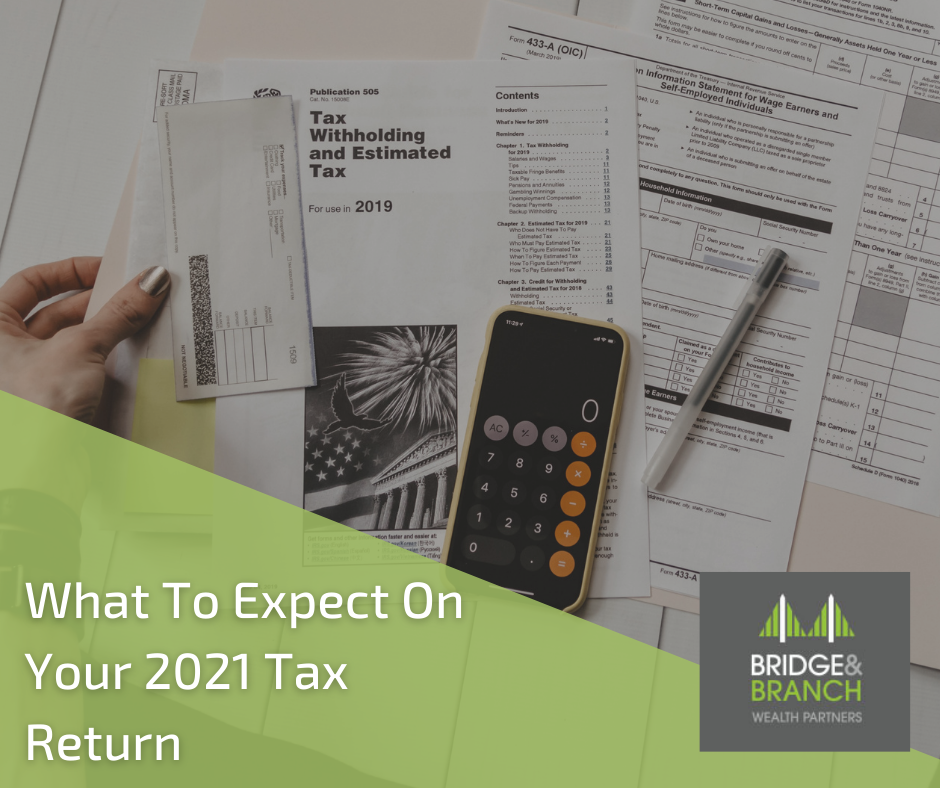The federal government’s response to the COVID-19 pandemic continues to impact individual income tax returns, from the suspension of federal student loan interest to expanded child tax credits. For many taxpayers, this may mean your 2021 return may look a bit different from last year’s tax return. For some, this may mean a smaller refund or a higher tax rate. Here is some information about how certain factors may result in a lower federal income tax refund or affect your taxes due.
No Tax Waiver on 2021 Unemployment Benefits
In March 2021, Congress passed the American Rescue Plan Act, which waived federal income tax on up to $10,200 of unemployment benefits paid per individual in 2020.1. However, no unemployment tax breaks have passed since then. This lack of a tax waiver means that the approximately 25 million Americans who received unemployment benefits in 2021 and did not have federal income tax withheld (or pay estimated taxes) may receive a smaller refund than before.
Advanced Child Tax Credits May Lower Refunds
If you have a child under the age of 17 and did not opt-out of the $250 or $300 per month per child advance payments beginning in June 2021, there is a lower income tax refund possible to compensate for these advanced child tax credits payments.2 The overall child tax credit was higher than in prior years (at $3,600 per child age five and under and $3,000 per child age six and over). However, advancing half the overall credit over the last half of 2021 means that taxpayers may now get proportionally less when they file their tax returns.
No Federal Student Loan Interest In 2021
For more than a decade, taxpayers who pay interest in federal student loans have been able to deduct up to $2,500 in interest paid. But with the suspension of interest on federal student loans from March 2020 through May 2022, many taxpayers will not have any student loan interest to deduct for 2021.
Those With Defaulted Student Loans Could Have Refunds Seized
Along with the moratorium on student loan payments and interest charges, the federal government stayed tax refund offsets—and all collection activity—for defaulted federal student loans. This moratorium meant that those whose loans were in default could not have their tax refunds garnished by the IRS during the stay period.
The moratorium expires on January 31, 2022. This expiration means those who file a tax return early—and receive a refund on or after Feb. 1—could see this refund garnished and put toward their overall loan balance and penalties. For taxpayers in this situation, it might be worth investigating your options to get your loans out of defaulted status before filing your 2021 tax return.
Suppose any of these situations apply to you. In that case, a financial professional may be able to help you investigate other available federal and state tax benefits that may help manage your tax bill or boost your refund.
1 https://www.cnbc.com/2022/01/03/no-a-tax-break-on-2021-unemployment-benefits-isnt-available.html
2 https://www.forbes.com/sites/robertfarrington/2021/11/22/americans-should-be-prepared-for-a-smaller-tax-refund-next-year/?sh=4fd19fd1c718
This information is not intended as authoritative guidance or tax advice. You should consult with tax advisor for guidance on your specific situation.
Important Disclosures
The opinions voiced in this material are for general information only and are not intended to provide specific advice or recommendations for any individual.
This information is not intended to be a substitute for specific individualized tax advice. We suggest that you discuss your specific tax issues with a qualified tax advisor.
All information is believed to be from reliable sources; however LPL Financial makes no representation as to its completeness or accuracy.
This article was prepared by WriterAccess.
LPL Tracking #1-05239398

